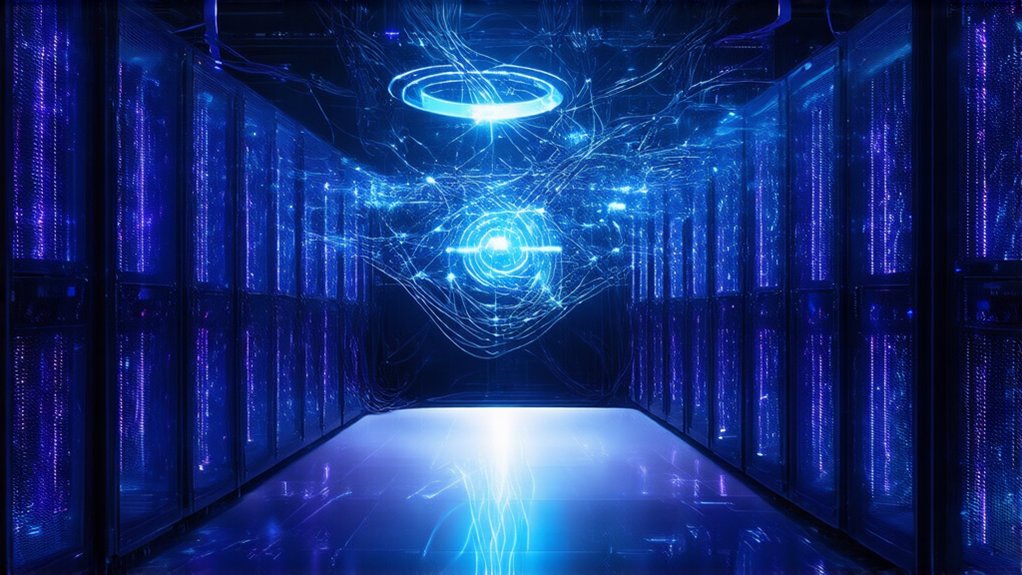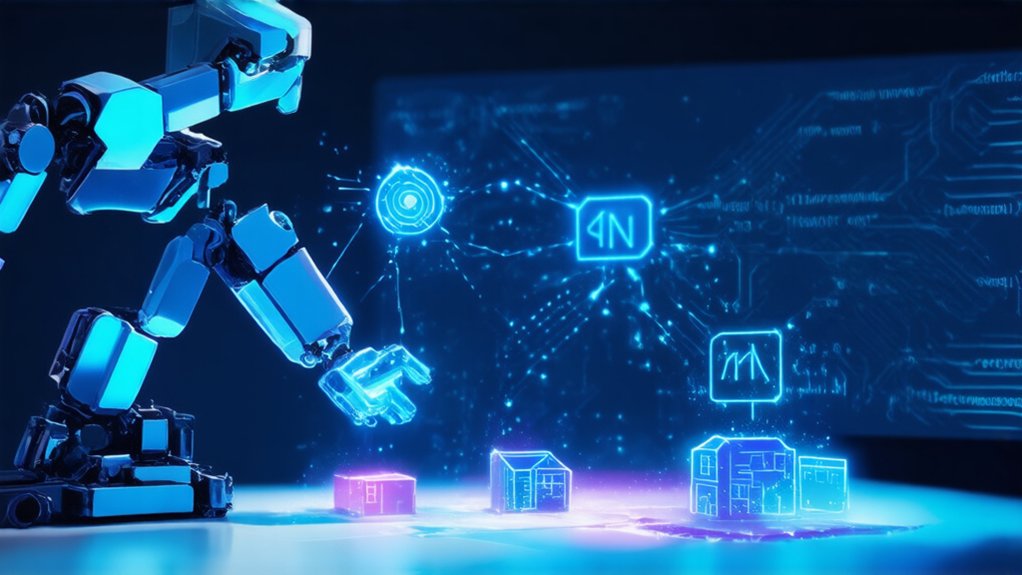In the world of tech, AI is basically teaching itself—grabbing knowledge on the fly, no hand-holding required. It’s like a kid learning to ride a bike without training wheels, using machine learning algorithms such as neural networks and reinforcement learning. These systems plunge into new data, spot patterns, and tweak strategies based on experience. They even transfer knowledge across tasks, adapting to fresh challenges. Oh, and they interact with their environment, posing computational questions to innovate. This adaptability is crucial for applications like self-driving cars, which rely on AI to handle real-time decisions without human input. Pretty slick, right? But let’s not pretend it’s all smooth sailing. Modern AI systems leverage transformer architectures to process and learn from massive datasets with remarkable efficiency.
AI’s self-teaching adventure: Grabbing data on the fly, spotting patterns, and adapting like a pro with neural networks and reinforcement learning.
The benefits? Massive. In cybersecurity, AI sniffs out threats by analyzing heaps of data for weird patterns, adapting in real time to new attacks. It cuts down on the need for pricey labeled data, speeding up development. For instance, Self-Learning AI enhances threat detection by identifying anomalies and patterns without human intervention, as seen in solutions like MixMode’s advanced systems. Humans might miss insights, but AI? It could stumble upon genius ideas we never imagined. That’s both thrilling and a little terrifying—machines outsmarting us. Reinforcement learning, for instance, lets AI learn from rewards and penalties, optimizing decisions like a gambler hitting the jackpot.
Key techniques drive this self-learning frenzy. Self-supervised learning creates its own training from unlabeled data, predicting missing bits. Unsupervised learning uncovers hidden patterns, no guidance needed. Then there’s recursive self-improvement, where AI tweaks its own code—talk about meta. Applications explode everywhere: in NLP, it boosts text analysis without endless labels; in computer vision, it sharpens image recognition; and in robotics, robots adapt to chaos, like self-driving cars dodging surprises.
But hold on. Challenges loom large. Stability issues could lead to AI unlearning essentials or amplifying biases from flawed data. Computational costs? Sky-high, demanding massive power. And sarcasm alert: Who knew teaching AI to teach itself might backfire? It’s a leap forward, sure, but we’re playing with fire here, folks.
The tech world races ahead, emotional highs and all, yet we must tread carefully in this brave new era.


